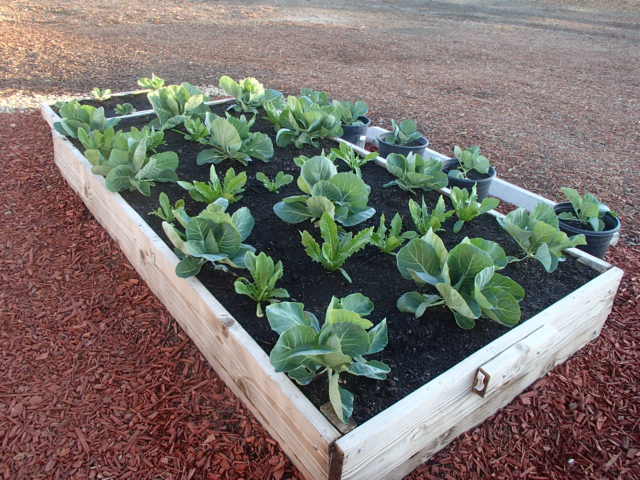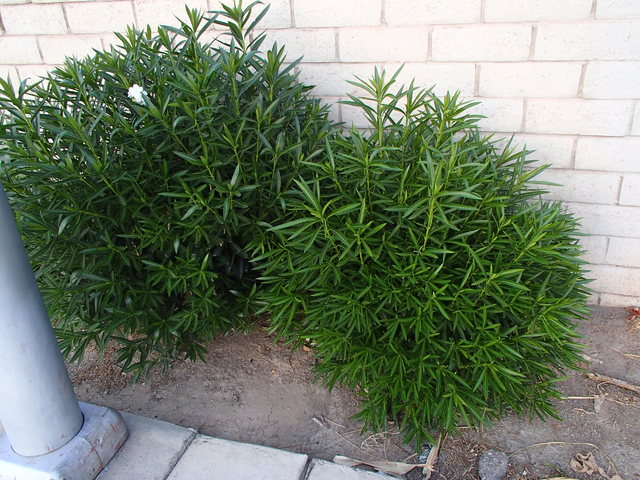Soil still warm enough to germinate vegetables planted from seed
Temperatures turned cold this past week. Historically, we still have about three or four more weeks of warm weather so it probably will get warm again soon. But if you plant vegetables from seed, these cold soil temperatures should still be warm enough to germinate radish, peas, beets, possibly carrots and turnips.
Raised beds in full sun and “fluffed up” with compost have the best chance of germinating seed during cold weather. If the soil is compacted and difficult to dig, it will stay cold and germination of seed will be slow, difficult and maybe impossible.
If soil temperatures are suspiciously cool, peg the surface of the planting area with clear plastic and cover the edges with soil. After one week, cut a slit in the plastic and plant directly in this warmer soil through the slit.
Expect freezing temperatures sometime during the first three weeks of December. Watch for a cold front like we just had and get ready to throw a frost cover or light blanket over tender citrus trees if weather alerts are predicting a freeze. Frost covers or frost blankets are the best.
Most important is to keep cold wind from damaging the youngest shoots. Wrapping the tree with Christmas lights may help if the lights are not LEDs and if the tree is protected from the wind. If the tree is unprotected, it may not have any flowers or fruit this next year.
If temperatures are unusually cold, the tree might not have fruit next year regardless of what you do. A lot depends on where you live in the valley.
Q: My young fruit tree suddenly lost its leaves. This happened after I changed to the fall watering schedule. A couple of weeks ago I had a tree service fertilize all my trees and shrubs including fruit trees. They said there is nothing in their mixture that could have caused this.
A: Trees and shrubs are normally fertilized in early spring, not the fall. There is nothing wrong with fall fertilization, but it should never be done in the fall to plants that are sensitive to freezing temperatures.
When fertilizing in the fall, it is best to wait until all growth has stopped with only a few weeks remaining before the leaves change color. November is usually a good time to do this.
There are typically two reasons for sudden leaf drop if temperatures are still warm; soils are overly dry or improper fertilizer application. I agree with your tree company. There is nothing in their fertilizer mix that would cause leaves to drop but if fertilizer is applied incorrectly or the soil is dry when it is applied, the tree might experience unexpected rapid leaf drop.
If the soil dries out too much, leaf drop should be gradual in the fall. Leaves wilt, they turn gray because they are drying out and they fall from the tree in about a week’s time. If fertilizer is applied too close to the trunk or applied when the soil is dry, leaf drop would be sudden — overnight. Always fertilize when soils are wet and at least 2 to 3 feet from the trunk.
Fortunately, I don’t believe the tree has any long-term damage. To be certain, bend small branches from where the leaves dropped. They should bend easily without breaking. Supple branches after unexpected leaf drop in late summer or early fall is a good indicator. This means they will most likely come back.
The worst time for unexpected leaf drop is in the spring during periods of active growth. Leaf buds for the following year have not yet been initiated. In the fall, when the tree has stopped growing but already formed leaf buds for next year, it would grow new leaves in a couple of weeks if temperatures are warm and the soil moist.
Irrigate the soil above the tree roots with a hose, flooding the areas where fertilizer was applied. Apply 15 to 20 gallons of water slowly to these areas. Do it again in one week. New leaves will emerge in 10 days to two weeks. Enough leaf buds will remain unopened for next spring’s growth.
Q: With cooler weather here I was wondering if it is safe to cover frost-sensitive vegetables with everyday trash bags. I would cut some vent holes in the bags so these vegetables don’t overheat. I would not keep them covered except the coolest evenings. I have used burlap but sometimes it is difficult to keep it on some larger plants.
A: Warm season vegetables and herbs like tomatoes, basil and peppers get chilling damage below 45 F. It isn’t just freezing temperatures that could be a problem but “refrigerator temperatures” could be as well.
Plastic bags won’t give the plants enough protection from these types of temperatures. Row crop covers (frost covers, frost blankets) that are draped over the entire row and in contact with the soil are a better choice.
Unlike trash bags, they can be left on top of the plants for several days at time. Use row crop covers that weigh about 1 ounce per square yard. They can be used for three or four years, breathe and transmit at least 50 percent of the sunlight.
Row crop covers keep temperatures under the cover about 5 to 6 degrees warmer than the outside temperature. Plastic bags won’t do this.
Make sure row crop covers cannot be blown off the plants or the row. Tack or peg the edges to the soil. Cover the edges with soil.
The added benefit from row crop covers is protection from insects outside the cover. If insects are trapped under the cover that won’t help protect plants and fruits from being devoured or attacked.
If using some form of pest control, apply it and then cover these plants soon after the application. Warm temperatures under crop covers help cool season types of vegetables (lettuce, spinach, broccoli, carrots) grow a bit faster and protects them from wind damage as well.
Q: I was reading your article on pruning overgrown oleanders close to the ground to renew them. Our community has a bunch of 10- to 15-year-old Texas rangers that have not been properly maintained. If they were pruned like the oleanders, would they come back so they don’t have woody stalks at the bottom? My concern is they may not recover quickly enough and be an eyesore.
A: The big advantage oleander has when cutting them close to the ground is their rapid growth the following season. With water and fertilizer applied in the spring, they can be 3 to 5 feet tall the following year after being cut nearly to the ground in late winter.
This is not true for Texas ranger. They grow more slowly. But yes, they will regrow from the base if they are pruned close to the ground. They may take two seasons to fully recover to your satisfaction. It is up to you to decide if that is too slow under your circumstances. You may decide to take them out and replace them instead.
Remember, the reason oleanders and Texas rangers look so bad in the first place is because of how they were pruned after they were planted. If they were pruned properly, they would never have woody stalks at the bottom.
As long as the same landscape crew is pruning them, the same problem will appear in about three to five years of pruning. Then you’ll be faced with the same problem all over again.
The proper way to prune Texas rangers is to remove one or two of the largest or oldest stalks near soil level every two to three years and not use hedge shears. This will cause the shrub to grow from these cut stalks and fill in from the base.
Using hedge shears and pruning only the top and sides causes the stalks to become older, woodier and larger in diameter. The leafy stems and flowers will be found only around the top and sides of the shrub.
Bob Morris is a horticulture expert living in Las Vegas and professor emeritus for the University of Nevada. Visit his blog at xtremehorticulture.blogspot.com. Send questions to Extremehort@aol.com.























